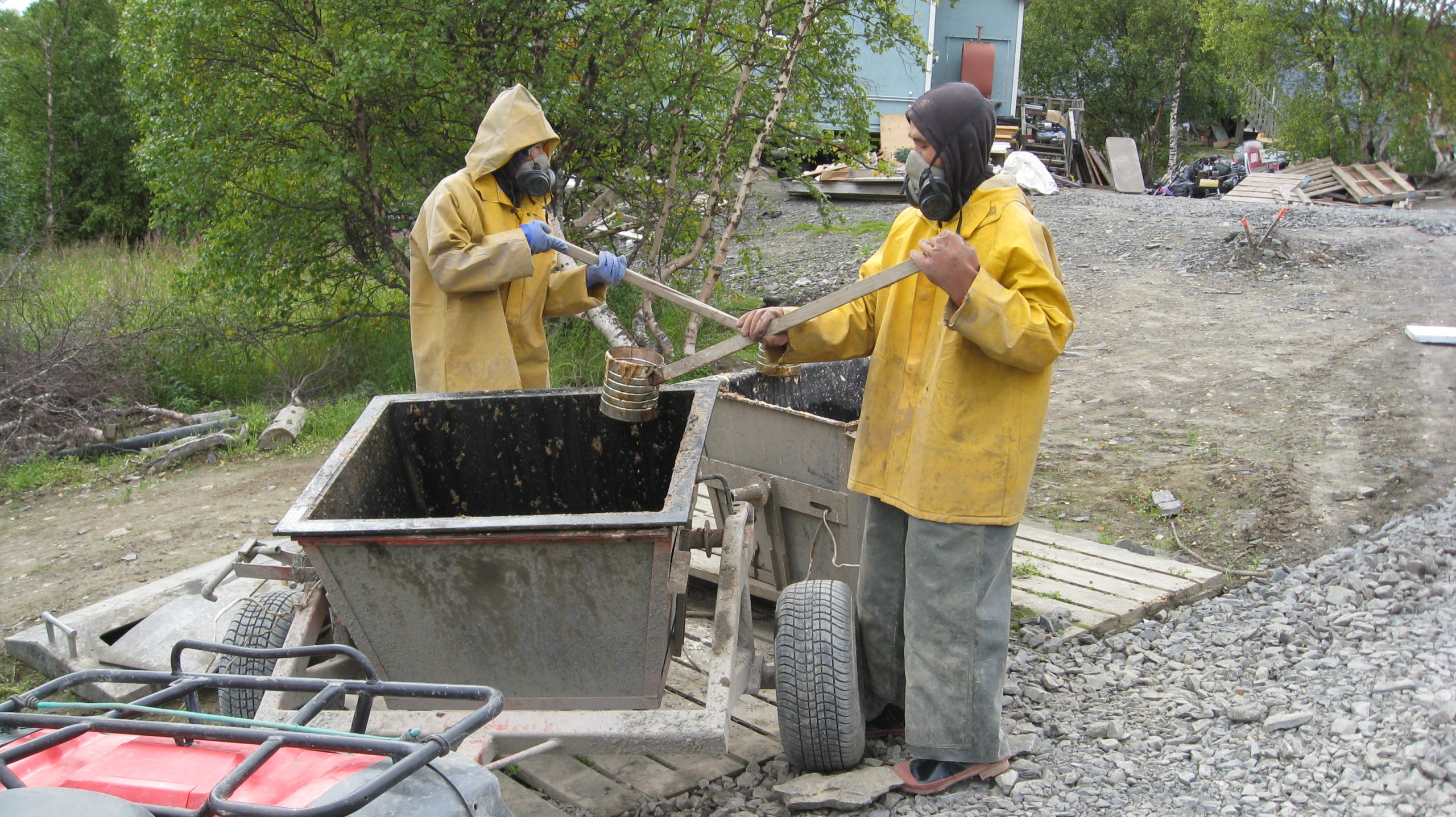Water and sanitation deficiencies worsened the COVID pandemic in rural Alaska, a study finds
Researchers found, unsurprisingly, links between the absence of critical infrastructure and the spread of the virus.

A lack of adequate water and sewer service and overcrowded housing combined to make the COVID-19 pandemic more severe in rural Alaska, a new study confirms.
Those conclusions are intuitive and expected, but the study documents the links between infectious diseases and the challenging living conditions in rural and mostly Indigenous regions of Alaska, one co-author said.
“The paper was just borne out of desires to put things on the record,” said Srijan Aggarwal, an engineering professor at the University of Alaska Fairbanks who specializes in environmental studies.
Part of that documentation was a set of hard statistics. More than 3,300 homes in more than 30 of Alaska’s 190 remote communities lack in-home plumbing, it noted. In all, 22 percent of homes in remote Alaska communities lack in-home plumbing, compared to 1 percent nationally, said the study, by researchers from the Alaska Native Tribal Health Consortium, UAF and other institutions.
The difficulties of obtaining clean water mean much less is used for the cleaning needed to prevent the transmission so diseases, the study said. While the World Health Organization for estimates for per-capita water use range from 13 to 15 gallons a day, in rural Alaska, typical per-capita water use is less than 5 gallons a day, it said.
The study concluded with a call to action.
“Considering the unique challenges faced by rural Alaska during the COVID-19 pandemic, efforts to enhance water, sanitation and hygiene access in remote communities need to be renewed and increased at the local, regional, state, and federal levels,” said the study, published in the journal Science of the Total Environment.
Several factors combine to exacerbated COVID transmission in the communities that lie off Alaska’s road system, Aggarwal said. The study provides information about those factors — not just current water and sanitation shortcomings, but also overcrowded housing conditions and the difficulties of accessing medical care, especially in the villages outside of hub communities.
The combination of those factors, which reinforce each other, make solutions complicated, Aggarwal said.
“There is no silver bullet. There are no easy answers,” he said.
The study described the specific rural Alaska challenges. Some stem from remoteness — distance from medical services, economic impediments to infrastructure investments in small and distant communities and rugged conditions. Others stem from the lack of remoteness — the extremely close contacts that are unavoidable in the villages that share their living spaces and water and sanitation access.
The study describes the methods used in remote communities to obtain fresh water, and how those methods make water vulnerable to contamination.
In villages where households are unpiped, residents receive water either from a truck that makes deliveries or by hauling water from a local source. Using the same wheelbarrows, buckets or jugs repeatedly increases the odds for germ exposure, the study points out.
A related study by some of the same authors, based on a year-long monitoring project in two Alaska Native communities conducted in 2018 and 2019, found that residents were taking extraordinary efforts to conserve and reuse water because hauling it was so difficult. Those conservation efforts came at a cost — total coliforms were found in 30 percent to 60 percent of samples from stored household water, according to the study, published in May in the journal Environmental Engineering Science.
Some communities without in-home plumbing make use of “washeterias,” centers with drinking water supplies, showers and laundry. While they are valuable sources of water and sanitation services, they are also meet-up sites where villagers can crowd together and infect one another. Washeterias and other infrastructure also subject to disruptions, some driven by climate change, like permafrost thaw.
Accidents and disasters can also interrupt service. In January, for example, a fire destroyed the plant-washeteria facility that was the only source of freshwater in Tuluksak, a Yup’ik village of about 300 people.
Along with difficulties in obtaining water supplies, there are challenges to properly getting rid of wastes.
It’s nearly impossible to build outhouses in permafrost soils, so in some unpiped communities, residents use “honey buckets” — five-gallon, plastic-bag-lined buckets that serve as portable toilets. But storage of honey bucket creates significant disease-spread dangers, according to the study. Filled buckets and sit around in home entryways or just outside the doorway for days or even weeks before they are disposed at the local dump or lagoon, it said.
Long before COVID, the link between water, sanitation and housing shortcomings in rural Alaska and the prevalence of respiratory disease was well-known. So when COVID emerged, officials and residents in the region knew those shortcomings would exacerbate the problem, the study noted.
Based on that knowledge, officials took protective action. Tribal and regional organizations distributed large quantities of hand sanitizer, bleach and other disinfecting materials, and the state was generous with its distribution of personal-protective gear. Some western Alaska local water utilities waived fees temporarily.
At the time the study was written, Alaska had over 52,000 COVID-19 cases and 277 COVID-19 deaths. As of Wednesday, Alaska’s residential case total had reached 69,891, with 374 total resident deaths, according to state data.
Throughout the pandemic, Alaska Natives have been disproportionately affected by COVID. Though Alaska Natives make up about 16 percent of the state’s population, they accounted for 37 percent of COVID deaths in Alaska in 2020, according to a report issued by the state’s epidemiology office.
Support for this reporting came from the Dennis A. Hunt Fund for Health Journalism, a program of the Annenberg Center for Health Journalism at the University of Southern California.